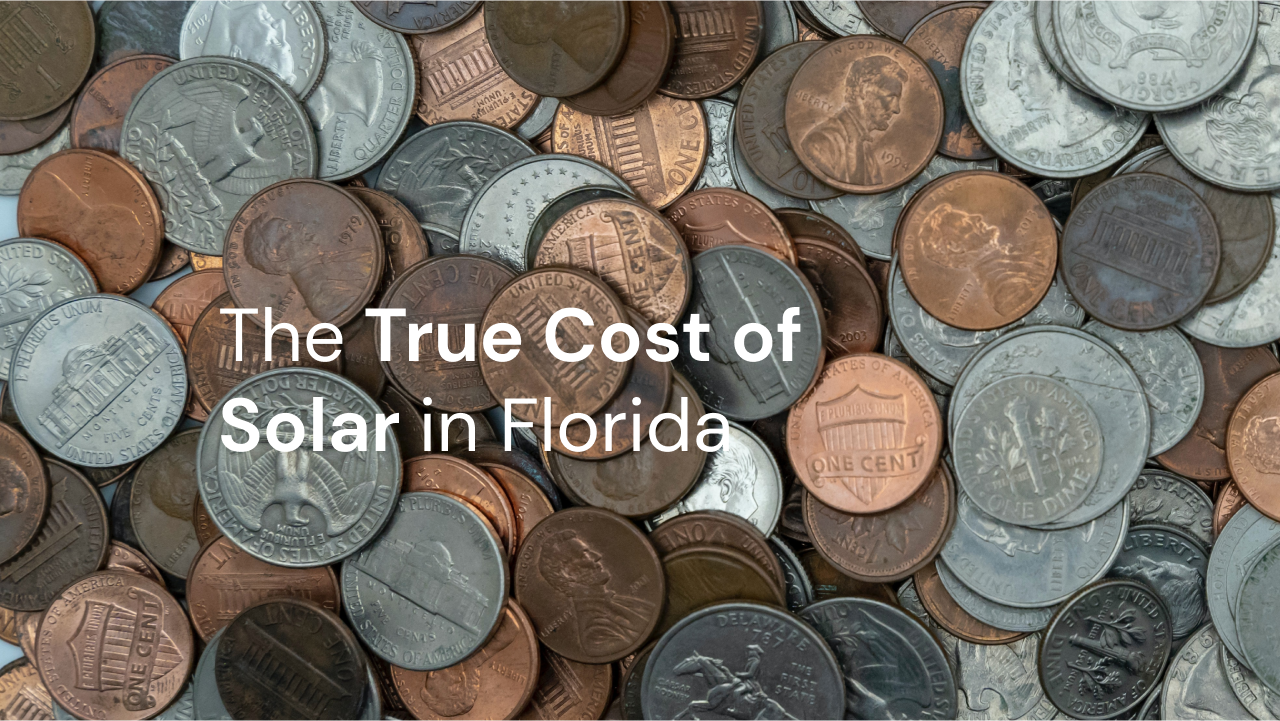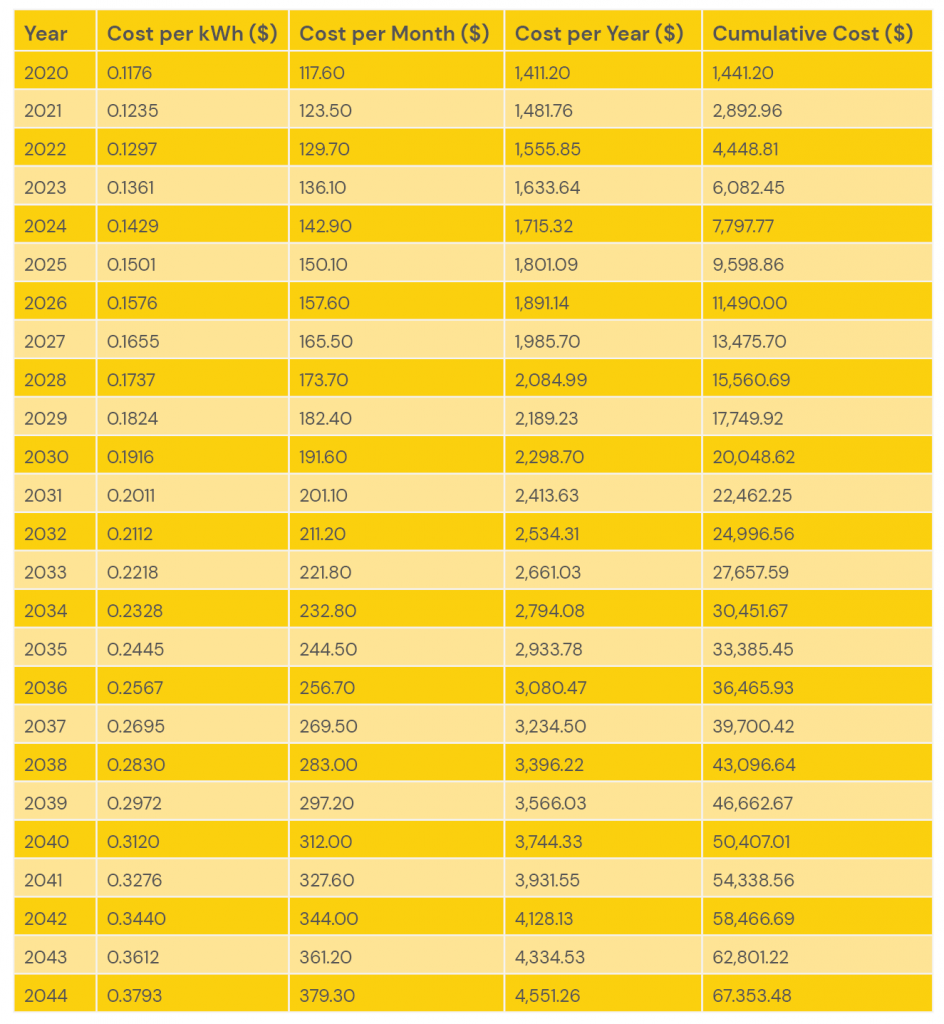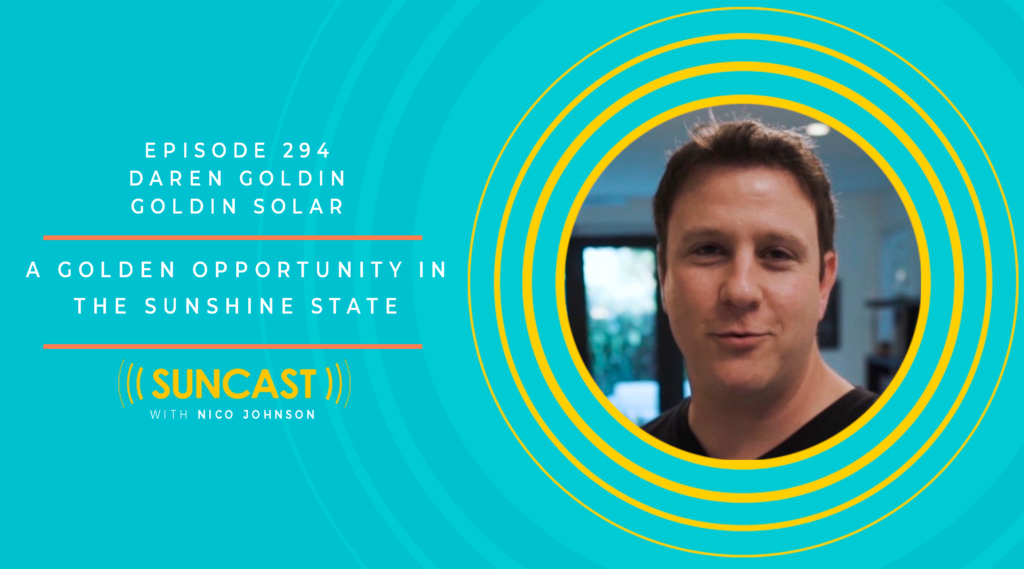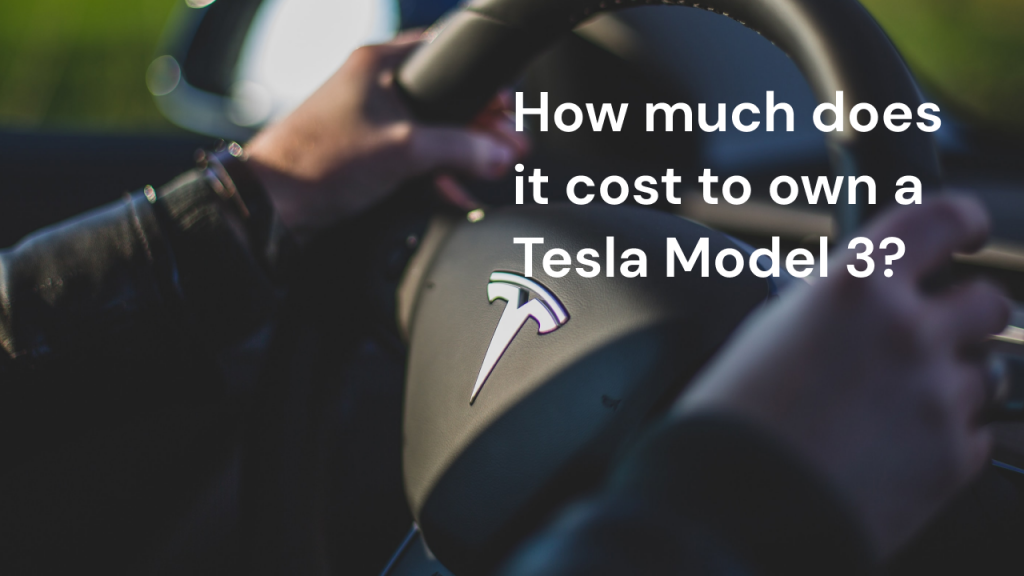The price of a new solar array on your home is significant. Indeed, a solar array is one of the biggest home-improvement investments you can make. However, unlike many other home improvements, rooftop solar is nearly guaranteed to pay you back over time. In this article, we will discover the true cost of solar panels in Florida by comparing the cost of purchasing or financing solar with the cost of paying a monthly bill to the utility company.
We will use a case study for a typical home in Florida to help us find the true cost of solar.
The Average Electric Bill in Florida
The average home in Florida consumes about 1,000 kWh of energy per month. Your actual usage can be found on your monthly electric bill.
Our imaginary electric bill will be calculated by multiplying 1,000 kWh of energy use by the price of energy. In Florida, the average price of energy in 2020 is $0.1176/kWh. This results in an energy bill of $117.60. This does not include extra charges like the connection fee that going solar can’t remove.
Utility rates also increase over time. A typical rate of increase is 5% per year.
With this information, we can create a table of yearly and cumulative energy costs. It is these costs that we compare to the price of solar in order to determine solar’s money-saving potential.
Cumulative Cost of Paying the Utility Company
Next we determine how many solar panels are required to produce this quantity of energy and how much they will cost.
Determining How Many Solar Panels Are Needed in Florida
There is no simple way to determine exactly how many solar panels a home needs or how much they will cost before getting a detailed consultation with a solar expert. Every installation is different based on its location, roof pitch, shading, and other factors. However, we can make some generalizations to create a back-of-the-envelope estimate for the required system size and price.
We use this formula to get a rough idea of how many watts of solar you need to provide all of your energy needs for a month:

The peak solar hours is a value that depends on your latitude and the roof pitch. For an ideal roof in Miami, it is 5.2 hours. You can explore how this value is calculated and lookup related values for the United States on the GIS section of the National Renewable Energy Laboratory (NREL) website.
In our example of 1,000 kWh of energy use in Miami, the required system size is 8,000 W. This can be achieved with about 24 Hanwha Q CELLS solar panels.
The Price of Solar in Florida
As mentioned above, the price of a solar installation will vary based on the details of the contract. An example homeowner may pay $2.65 per watt. At this price, our 8,000 W system will cost $21,200.
In Florida in 2020, there are several incentives that bring down the cost of solar. Solar is exempt from sales and property tax, so the price of installation is the only cost. In addition, you can benefit from the federal Investment Tax Credit (ITC), which is currently 26%. This tax credit puts cash back in your pocket for going solar. This brings our system price down to $15,688.
Cash Purchase Savings
We can compare this price to our cumulative electric bill table above to see that the total price paid for electricity from the utility would surpass this value during year 10. From experience, we know our customers’ average payback time is usually 5-7 years, so this estimate is pessimistic.
Solar arrays are expected to have a lifetime of at least 25 years. At the end of 25 years. the cumulative amount spent on energy from the utility is $67,353. Therefore, with a cash purchase, you can expect your Florida solar array to save you $51,664 over 25 years.
Did you know? Florida is one of the least competitive states for solar, so if you are elsewhere in the US, your savings are likely to be much higher.
Loan Purchase Savings
Since most customers do not have the cash on hand to purchase their system outright, let’s evaluate the money saved with a financed solar array. To do this, we need to calculate the monthly payment for a $15,688 system.
Our financing partners offer 12- or 20-year loan options. The lowest interest rate they offer is 2.99%. Your actual interest rate will be unique to you. I have calculated two loan payment scenarios to reflect the lowest and highest total cost with interest.
In our first scenario, your monthly bill is $12 higher than your electric bill right out of the gate. Over time, your monthly saving goes up as the utility rate increases. When the loan is paid off, your savings increase dramatically because you are no longer paying off the loan each month but are still producing energy. By the end of the 25-year period, you will have saved $48,652.
In the second scenario, you are paying an extra $4 per month in the first year. By the end of the 25-year period, you will have saved $38,161.
With these examples, we can see that even in the worst-case scenario with a 7% interest rate over 20 years, your solar array pays you back handily. The savings are more than enough to cover additional costs such as maintenance. You can learn more about the factors that influence your payback time in our complete guide to solar economics in Florida.
Environmental Benefit
Many of our customers are also motivated by the environmental benefits of a home solar array.
We discussed this issue in depth in the FAQ: Is Home Solar Really Sustainable?
To get straight to the point, a home solar array can reduce the average Florida Power & Light customer’s carbon footprint by 11,000 pounds per year. This is equivalent to planting about two acres of forest each and every year. The positive benefit of this carbon offset is much greater than the increased materials costs associated with going solar. Check out the article linked above to learn more about how this is calculated using lifecycle assessment.
We should celebrate this reduction in carbon. Below are a couple of videos that really demonstrate how the carbon levels in our atmosphere need to be reeled in, and fast.






